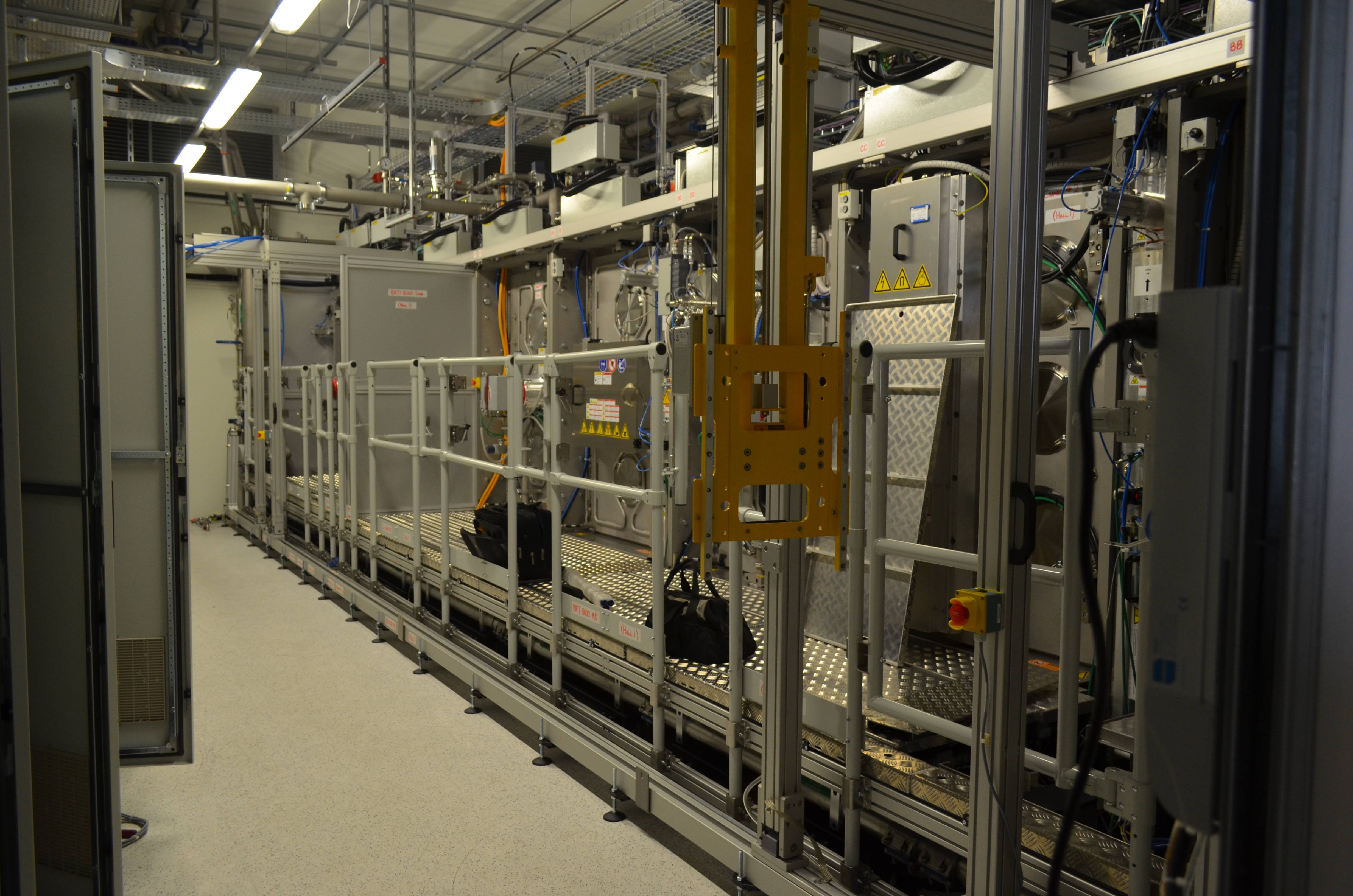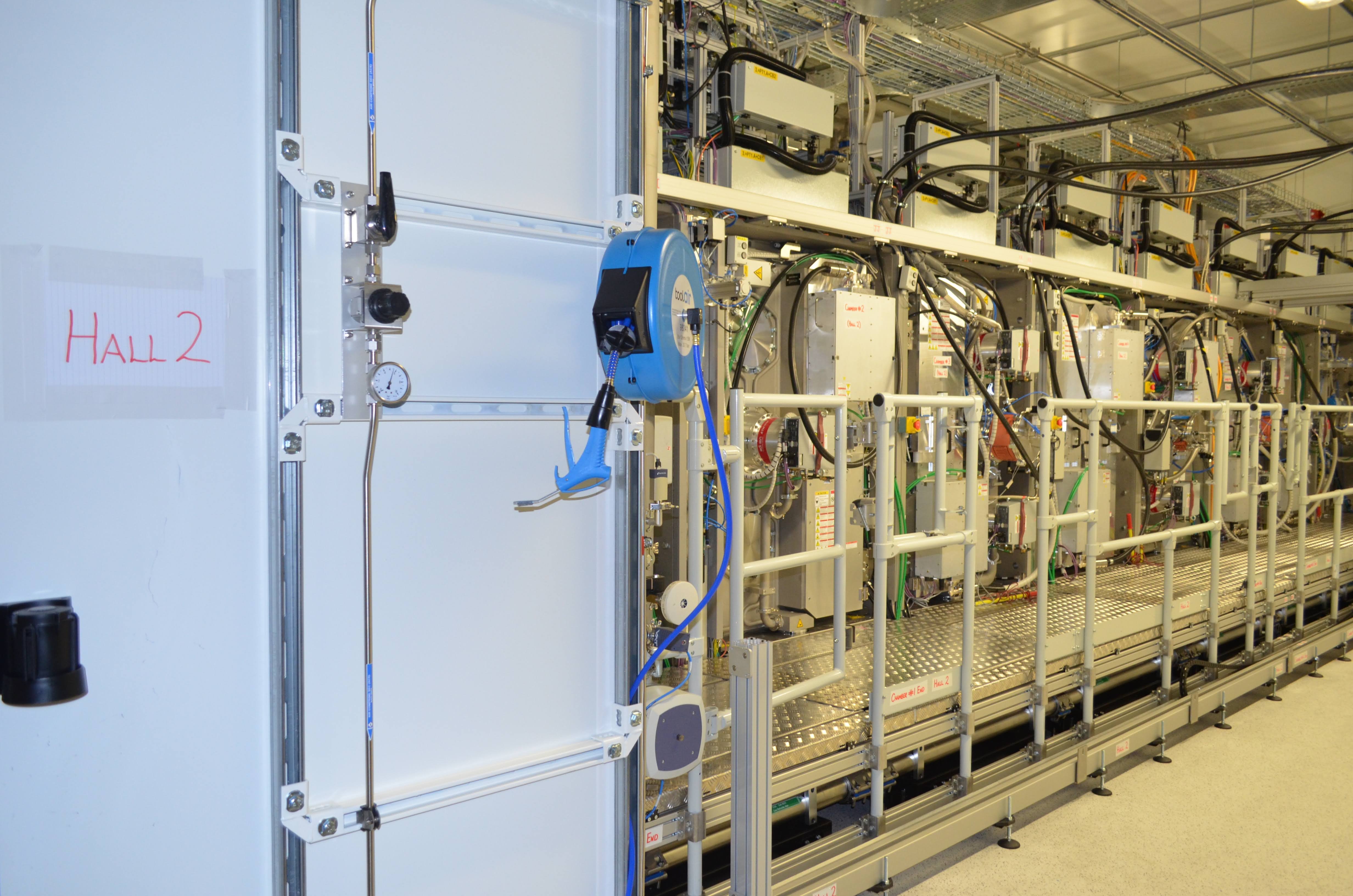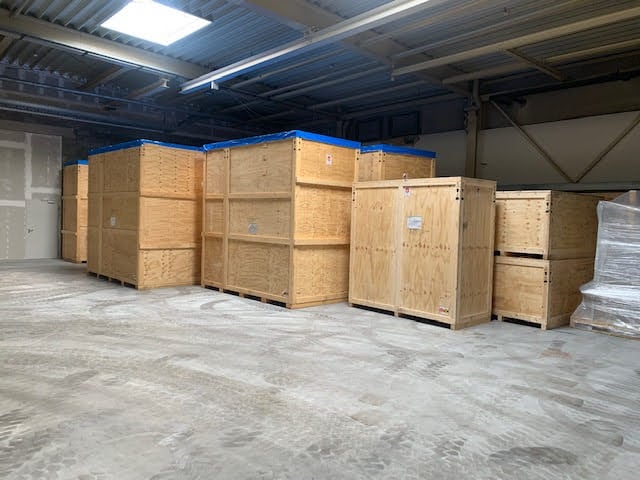Few complex engineering projects compare to the challenge of relocating sensitive, high-technology equipment across borders.
Let alone when that equipment is one of a kind, was built almost 30 years ago and hasn’t been used for over a decade.
Our story starts in December 2019, when our client approached us for support in de-installing and removing two custom-built tools from its site in Tours, France.
The first tool (let’s call it the “relocation tool”) was to be relocated more than 400 miles, where we’d then install and commission it at the Institute of Science and Technology (LIST) in Luxembourg.
While the second (let’s call it the “scrap tool”) would be scrapped for parts and used to blueprint the routing of power, gas, cooling and communication lines.
We knew this was going to be a challenging project, as the tools were custom-built on-site by Applied Materials in the nineties and consisted of a series of PVD chambers using RF sputtering for multi-process plating. They also hadn’t been run for eight years.

But with our decades of expertise in handling complex equipment relocation projects, we had the know-how to seamlessly handle all challenges that came our way.
Here’s how we did it.
It Starts with Thorough Planning
Every successful move begins with a comprehensive assessment.
Two of our engineers spent several weeks meticulously examining and documenting the tools, facilities and cleanroom setup at the client’s site. This included a full dimensional survey.
They also identified and labelled all components—as well as took pictures of and documented every fastener, hose, cable and service break point that would be removed.
Because transporting this particular tool would be significantly difficult, we designed a custom plan that addressed all the challenges that were unique to this equipment and the limitations to freight so we could ensure a seamless move.
This included:
- Equipment dimensions, weight and structural components
- Equipment fragility
- Special requirements
- Transportation routes
- Necessary permits
- Safety protocols
- Potential obstacles
Once we finalised our plan, we could start disassembly.

Leveraging the Scrap Tool to Guide Disassembly
We began by evaluating, blueprinting and carefully separating the scrap tool.
Two of our electricians disassembled the electrical power and cables on the scrap tool, while four of our installation engineers focused on the mechanical connections.
We used this process as a learning curve to observe and learn how we could minimise hose and cable removal when it came to the relocation tool. Preserving the original connections would mean fewer complications during assembly (such as vacuum or cooling leaks and wiring damage).
The scrap tool also helped us to precisely measure datum points for module placement and to manufacture jigs for chamber alignment at the new fab.
Three of our packers then used the scrap tool to build custom shipping frames to support and protect the relocation tool from damage during transport on forklifts, cranes and truck beds. The rest of the tool was removed for scrap, and we began disassembling the relocation tool.
Building Bespoke Crates
Moving large, complex equipment is inherently risky, So, we prioritise safety at all times.
During the project, the team adhered to the stringent safety protocols and adopted additional regulations at each site. This included using personal protective equipment, implementing secure fastenings, and maintaining clear communication channels throughout the operation.
Our highly trained professionals also used specialised equipment and techniques to ensure safe equipment handling throughout the relocation process. This included only using state-of-the-art equipment (forklifts, and rigging tools) that were tailored to meet the specific needs of each individual component.
The relocation tool’s eight main process modules each weighed over eight tons and reached almost three meters in height. This made them far beyond standard crate dimensions.
We designed a bespoke “cradle” crate to reduce the shipping height as best possible without the need to further dismantle the chambers. We used eight of these—one for each process module.

Because of the considerable weight and size of these crates, they each required a dedicated low-loader flatbed trailer to protect them on their journey across France and over the narrow, winding inner city streets of Luxembourg.
Lastly, we built and loaded approximately 75 crates of further assemblies, control cabinets, cables, tubing, stainless pipes and other ancillary assemblies. These were shipped separately from the modules.
Then, all we had to do was install the equipment once it safely reached its destination in Luxembourg.
Unfortunately, the pandemic had caused significant delays to the construction of the destination facility, so more than 12 months passed before we were able to begin installation.
Overcoming Complex Challenges
A successful project hinges on effective coordination and collaboration among team members.
Once the crates arrived at their destination, two of our electricians, three installation engineers and four riggers began the tedious process of uncrating and rolling in each module. Using the jigs and drawings we produced at the original fab, we precisely set the modules and aligned the process chamber modules.
However, installation would present a number of challenges for our team.
When the tool was originally built in Tours, 50 installers and engineers were on-site to assemble and test it. Our team, however, consisted of no more than ten dedicated professionals at any time.
Another challenge was that most of the Tours-based fab employees that originally worked on installing the tool had already moved on or retired, along with the Applied Materials engineers that developed it.
That meant there were no resources available to guide us in the installation of this one-of-a-kind tool—and we could only rely on our expert engineers’ vast knowledge and experience.
However, our engineers have been working with some of the world’s most complex tools for decades. That meant they could draw upon their deep knowledge to intuitively piece together the installation process from scratch.
Lastly, as we have access to specialist engineer support (both in-house and external) via our engineering resource support (ERS) division, we brought in a specialist field service engineer (FSE) to support the project.
Rewriting Code from Scratch
Adding the new FSE to our team brought huge benefits, as it advanced the timeline of powering up the modules and significantly reduced the amount of code that would be required for initial startup and operation.
The system had three interconnected programmable logic controllers (PLCs), those were Control, Human Interface (HMI), and Viewing. This was alongside nine sub-PLCs and additional safety PLCs. Which made for a network nightmare of CAN Bus communication faults and codes—which isn’t all that unusual when bringing nodes online out of sequence.
Unbeknownst to our team, the tool’s software also required an IP address that was no longer available, while battery systems were shot and needed to be replaced. Once we’d circumvented these issues, we needed to perform a specific startup sequence using each of the three different computer systems.
We then learned that some elements of the tool had actually never worked in Tours. And we’d need to bypass and rewrite much of the code to make the tool viable for LIST’s immediate needs.
Luckily, knowing the software protocol would likely be an issue before the tool was moved, LIST had prepared a superb team of software engineers that could rewrite operating code from the ground up.
The initial startup provided over ten pages of fault codes and weeks of troubleshooting. But after much trial, tribulation and rewriting code by LIST’s software engineers, the tool was brought to life and function.
We then performed a thorough assessment of the software, scrutinizing it for the viability of the aged PLC hardware, complicated software protocol and tool operation.
While LIST decided the systems would eventually need ground-up reprogramming for their needs, for now, the software was bypassed for manual processing.
Another Successful Relocation
We knew this wouldn’t be a straightforward project.
But because our team closely monitored every stage of the operation, making necessary adjustments and ensuring we met each milestone on time, we mitigated many of the potential issues with regard to damage, improper assembly, programming and operation.
From the project managers overseeing the operation to the skilled operators manoeuvring the equipment, all members worked perfectly in sync, each contributing their specialised skills to execute the project flawlessly.
Through our unwavering commitment and efficiency, we delivered the equipment to its new destination with only a few delays and the tools ready to overcome the expected complications.
Relocate Complex Equipment with Confidence
Relocating complex equipment requires extensive expertise, careful planning, and an unwavering commitment to safety and precision.
We’ve been relocating high-technology, business-critical equipment for some of the world’s most prestigious companies since 1991.




